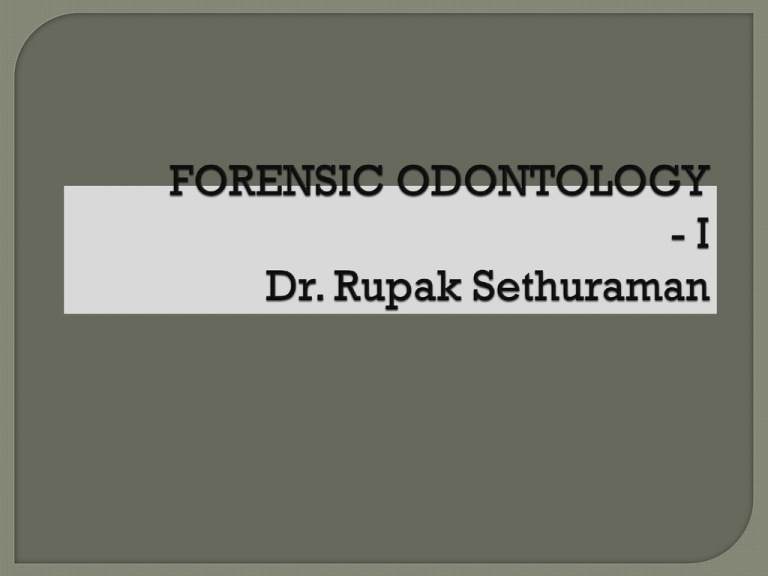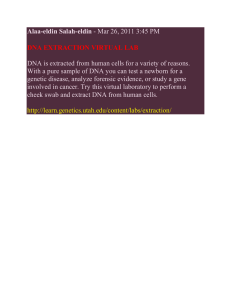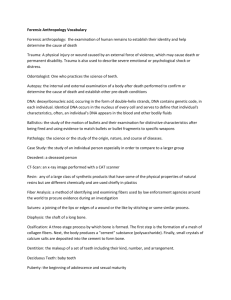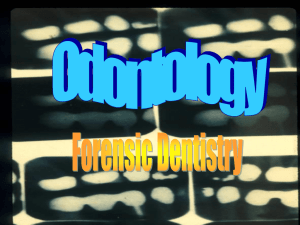Forensic Odontology I
advertisement

To understand the meaning and scope of forensic odontology. To understand how forensic odontology is used for dental identification. Definition Scope Dental identification Age estimation “The area of dentistry concerned with the correct management, examination, evaluation and presentation of dental evidence in criminal or civil legal proceedings in the interest of justice” Forensic dentistry plays a major role in identification, in man made or natural disasters –events that result in multiple deaths that may not be identifiable through conventional methods such as finger prints. Identifying unknown human remains through dental records and assisting at location of mass disaster. Determining the gender of an unidentified individual. Age estimation of both the living and dead. Recognition and analysis of bite marks found on victims of attack and other substances such as food stuffs. Presenting evidence in court as an expert witness. Human dentition is never same in any two individuals. The morphology and arrangement of teeth vary from person to person. Teeth are relatively resistant environmental insults after death. Moreover to most materials used by dentists for restoring teeth are also resistant to post mortem (after death) destruction. Traditional methods - Visually recognizing body, Personal property such as clothing ,jewellery etc. Visually identifying what is burnt or decomposed can be a very traumatic experience for relatives and friends ,the better option for identification is forensic expert to analyze physical features present in the body. Therefore the use of dental evidence by comparing antemortem (before death) and postmortem (after death) data is the method of choice in establishing the identity of badly burnt ,traumatized, decomposed and skeletonised remains. 1. Positive identification- There is sufficient similarity among the comparable items in the antemortem and postmortem data and no major differences are observed. 2.Possible identificationThere are similarities among the comparable items in the antemortem and postmortem data, however enough information may be missing from either source to prevent the establishment of a positive identification. 3.Insufficient identification evidence- There is insufficient supportive evidence available to compare and arrive at a conclusion based on scientific principles. Teeth are an excellent source of DNA since they can resist extreme conditions such as extreme temperatures. PCR (Polymerase Chain Reaction) allows amplification of even highly degraded DNA. PULPAL TISSUE IS THE BEST SOURCE OF DENTAL DNA. Two types of DNA 1)genomic or nuclear DNA 2)mitochondrial DNA (mt DNA) Each cell has a copy of mt DNA ,also exclusively inherited from mother; no contribution from father . Thus identical mt DNA is observed in siblings (brothers and sisters) , their mother and many maternal relatives (e.g. mother’s brothers and sisters). Any questions?? Thank you




